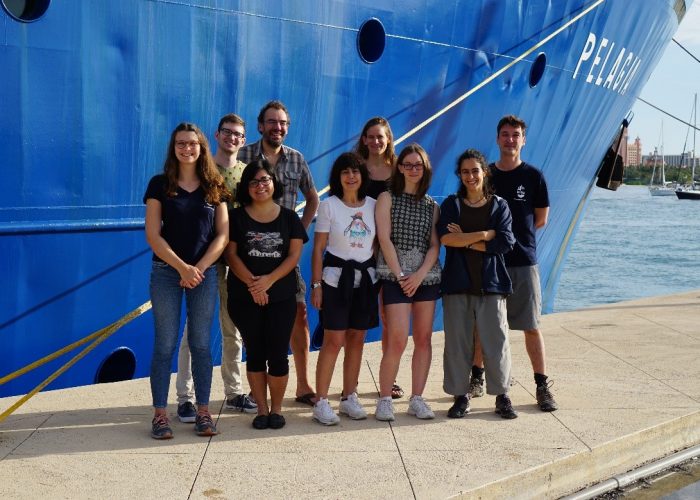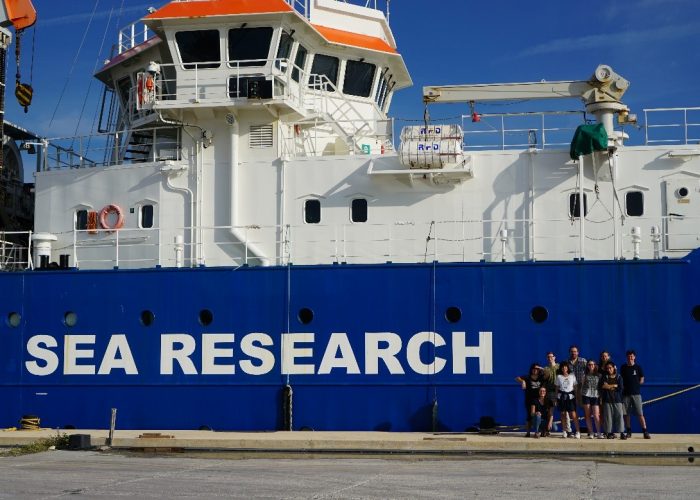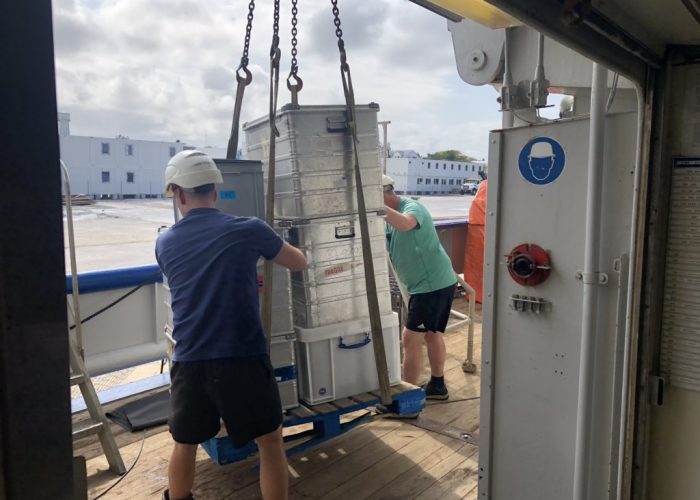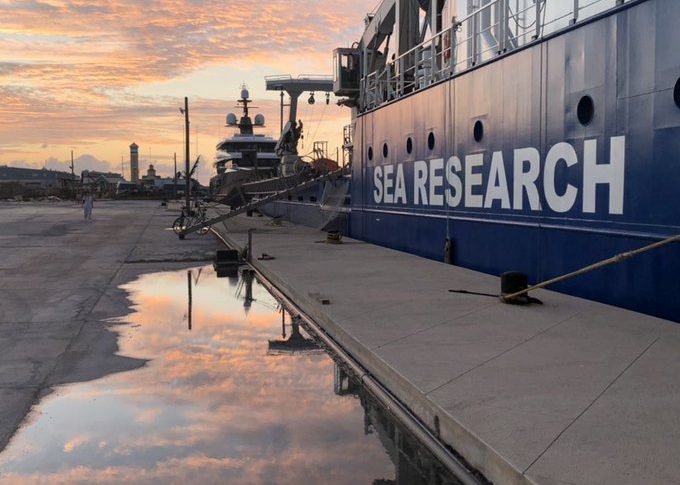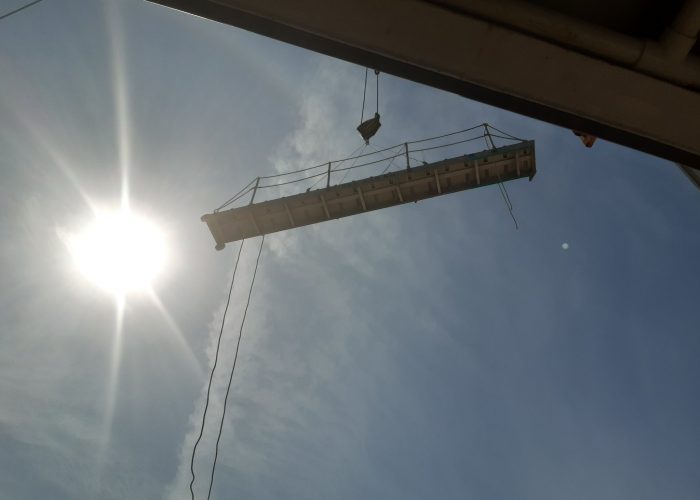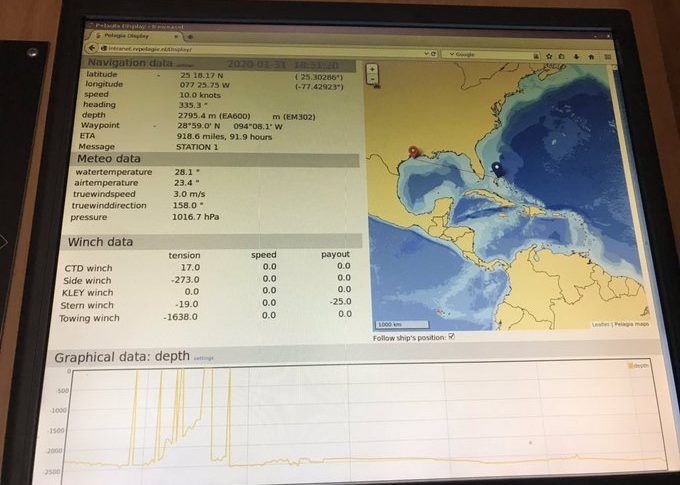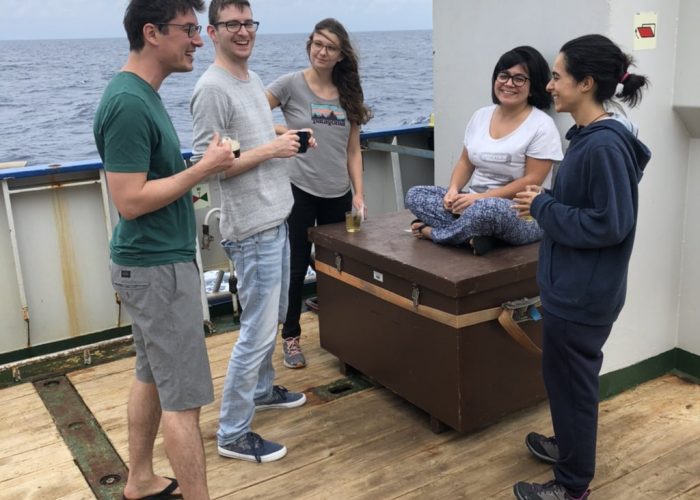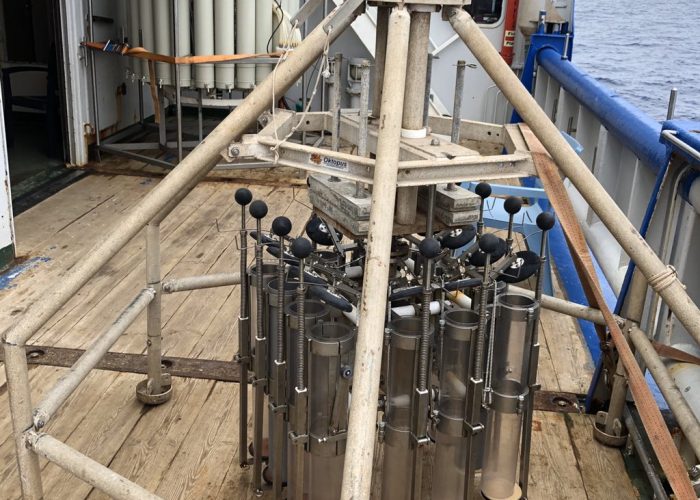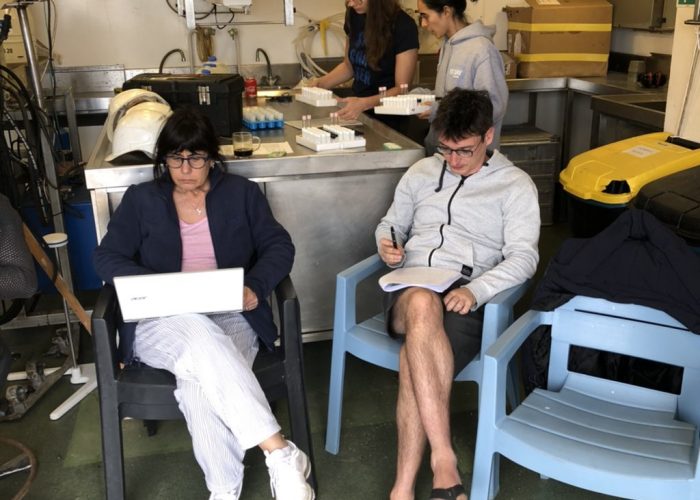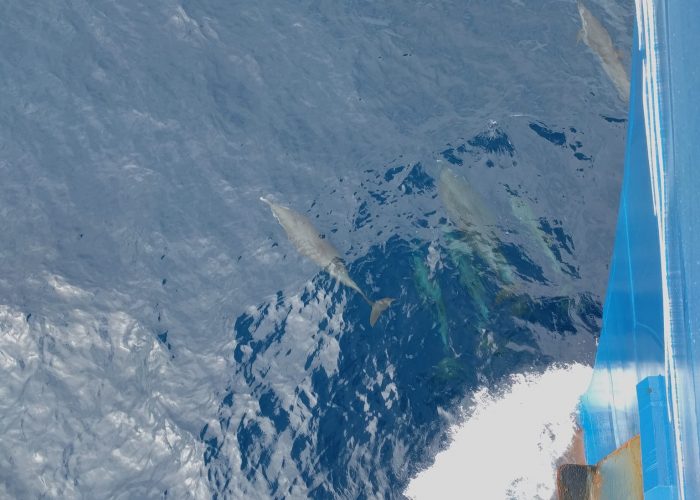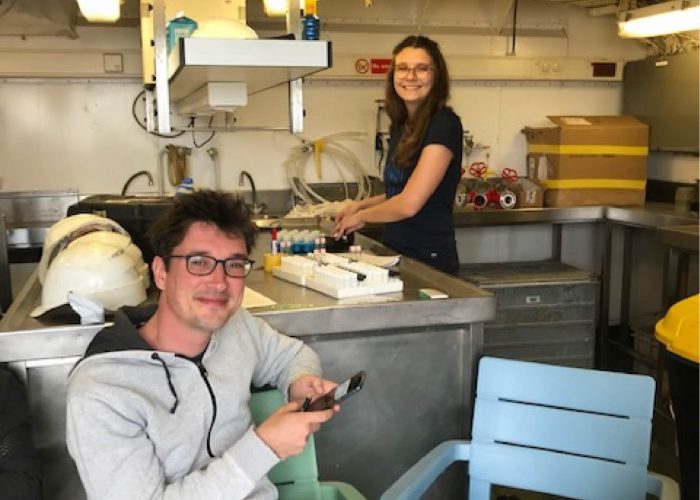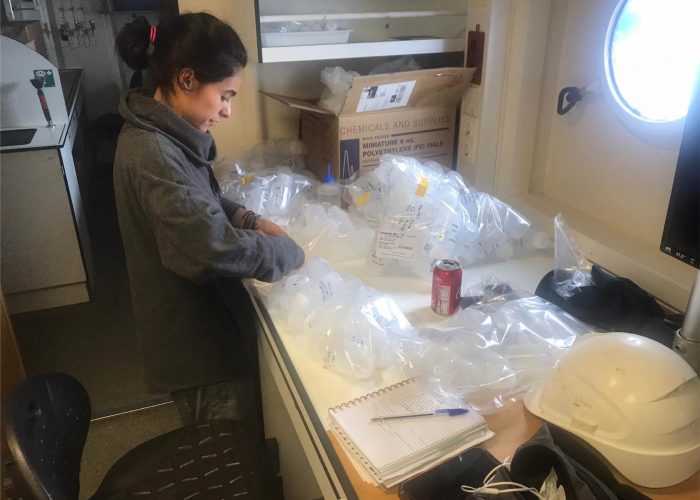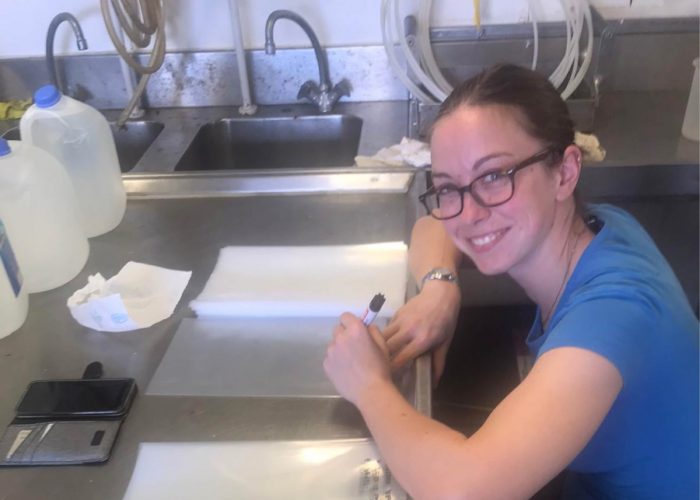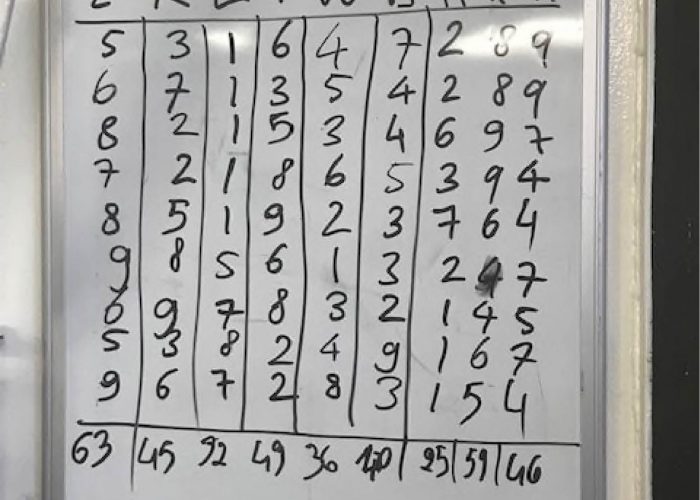Blog: Gulf of Mexico Cruise, 2020
Every year, the mighty Mississippi river and its distributaries carry vast amounts of sediments and nutrients into the northern Gulf of Mexico, impacting the chemistry and biology in the water and the seafloor of the region and triggering algal blooms.
This month, NESSC-researchers Francien Peterse, Francesca Sangiorgi, Laura Pacho Sampedro and Yord IJedema, with NIOZ colleagues Rick Hennekam, set out on an expedition into the Gulf of Mexico, aboard research vessel Pelagia. The Gulf of Mexico cruise aims to improve understanding of the impact of large delta systems on the coastal ecosystem in the present and past, and assess the fate of soil organic carbon and nutrients discharged by the Mississippi River.
In the below blogposts, the scientific crew share their experiences aboard the RV Pelagia!
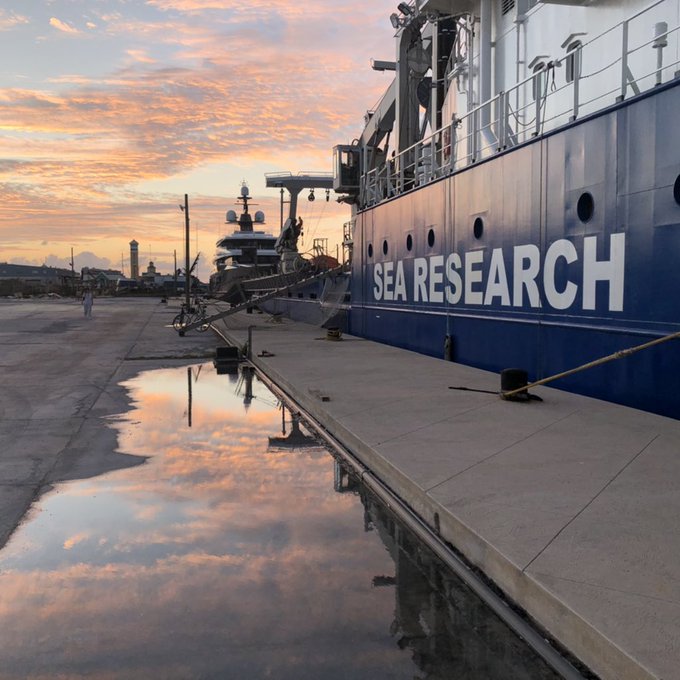
Day 1: February 1 – by Rick Hennekam, paleoceanographer at Royal NIOZ
Transit to Texas
We’re on the move. Yesterday we left from the Bahamas towards the southeastern coast of Texas, starting our adventure to study the water column and sediment archive in the northern Gulf of Mexico (GoM). From the Texas coast, we will gradually move in eastern direction along the coast of Louisiana to visit study sites with depths ranging from 20 meters to 3200 meters. Onboard are nine scientists, who heavily rely on the support provided by eleven dedicated crew members and two technical engineers on Research Vessel (R/V) Pelagia. Everyone is very eager to start, yet, as the ship moves with a speed of about 9 to 10 knots (around 17 km/h) it will take four more days before we arrive at the first station. We have to be patient…
The Mississippi/Atchafalaya delta, and thus this expedition, has a lot to offer from a scientific point of view. Not only will we study the burial of organic carbon in delta sediments – a potential sink for the greenhouse gas CO2 – we will also study the microbial community and the impact and extent of pollution instigated by the blowout of BP’s Deepwater Horizon, the largest marine oil spill in history.
Hypoxia
Last but not least, our research will focus on the processes that lead to oxygen concentrations less than 2 mg per liter water (or hypoxia); concentrations that cause large-scale mortality in animals as shrimps and fish. Since the 1970’s, the area of hypoxia has increased at alarming rates in this delta, reaching maximum values of about 20.000 km2 (close to half of the surface area of The Netherlands). The massive increase in nutrients introduced in the Mississippi watershed by humans is a key player to cause this expansion of oxygen deficiency. The GoM2020 cruise will focus on extending our knowledge on the cycling of nutrients within the water and the sediments and its association to deoxygenation.
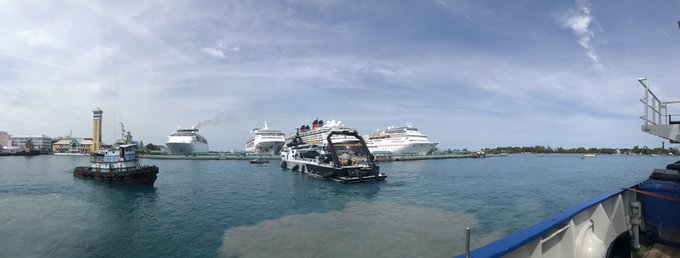
Our current pace with the ship should bring us at our first station on the 5th of February – somewhat later than scheduled – where we will start our scientific sampling frenzy. Some setbacks were encountered before embarking on this expedition. Yet, from a “glass-half-full” perspective, it is good that we encountered these before actually setting sail. Unfortunately, we had to exchange cooks, as some more important family matters occurred for our initial cook. Also, one of our fellow scientists (Yord) found out that a hand infection was worsening. After some minor surgery (all is well!), he needed to stay behind in Nassau in the Bahamas. The rumor is going around that Yord will still write the next blog from the hospital.
While waiting for arrival at our first station, the rest of the scientists are using their time by setting up the lab spaces, presenting scientific backgrounds and goals, discussing and updating the sampling plan (done!), and just existing. We have to be patient…
Rick Hennekam
Day 2: February 2 – by Yord IJedema
Doctor’s hospital, Nassau, Bahamas
So a few months back, you got yourself an awesome PhD position on organic carbon transport in the Gulf of Mexico. Great! You hear that there is fieldwork with the Pelagia involved. Terrific! Due to an unexpected gap in the ships schedule, you can actually do this fieldwork during the first month of your PhD. You only have to graduate in time and make sure that your contract starts a few days earlier. Done? Perfect. Now you have time to make everyone jealous that you go to the Bahama’s, meet up with your lovely group of scientists and prepare in anticipation of this wonderful journey.
The only troubling thing is that your hand starts to hurt a bit a week before departure. That’s probably because you work out too much and over-trained a tendon. Bummer. The hand now also starts to swell a bit, so you visit a doctor who thinks you got unlucky and caught a bacterial infection in a tiny wound that you would hardly notice, so you get antibiotics with you for ten days. Not too bad, with some luck your hand is normal and in full use again before the ship has reached the first coring site. But unfortunately, the swelling does not stop and the redness only increases, as you’ve already landed in Nassau. So you start your official first working day with a visit to the doctor, as the ship has to wait two days on the arrival of the new cook.
And then the doctors hit you with an ultimatum; or immediately fly back to the Netherlands, or get your hand operated here and stay in the hospital for five days, which was much more recommended as a few days later, it likely would have evolved into sepsis. Either way, you’re not going on that ship. …
…
…
…
…
(lively description of my initial reaction).
Well yes, how do you recover from that? For the physical part, quite okay. The operation went well and the infection seems to be almost gone. It is now a few days later and I hardly have any pain, although it will probably take a while before I can use this hand fully again. Tomorrow I will fly home, so I can focus on my recovery there. And luckily the insurance will cover my costs. For the mental part, I don’t know yet, but with every picture you see from the ship, you cry a little inside, although I really hope they keep sending them.
The hardest part is probably explaining to everyone in Utrecht why you are back early, or meeting everyone on the ship for half a day and then having to leave them behind (or rather the other way around). Well, at least you have the most interesting first day of a PhD that you know of, and everyone on the ship is miserable at the moment due to sea sickness. It’s the little things. For everyone still on the ship, bon voyage and I hope to see you soon in the Netherlands (or somewhere else Torbjörn). Also, I hereby volunteer to go on the next Pelagia cruise.
Best regards to everyone.
PS. Oh, you expected science in a science blog? Ehr, the climate is warming. Good night!
Yord IJedema
Day 5: February 5 – by Francesca Sangiorgi
Somewhere offshore Louisiana, 5th February 2020
We left Nassau (Bahamas) on January, 31st at 11 am. A brief and not too difficult calculation made us realize we had just started a very long transit: 1200 miles, 10 knots speed (10 miles per hour), 120 hours, exactly 5 days … 5 days? What can 9 scientists do on a boat during 5 days transit?
Each day on the R/V Pelagia is paced by breakfast (at 7 am), lunch (at 12.30 am), dinner (at 6 pm). Eating rituals are quick and efficient, eating is not quite seen as a pleasure when you are on a ship, although the food prepared by our cook HendrikJan is delicious. Eating is rather seen as a way of surviving. Each meal takes about 20 minutes, and the days (on transit) are very long.
But scientists are full of great ideas … so here is how we spent our time.
Day 1: the day went by quite quickly, sharing some ideas, getting acquainted to the ship and the life on board. The evenings after dinner are a great opportunity to share scientific background, projects, science plans, goals to be achieved with this expedition and beyond. Torbjörn, Geology professor at Tulane University, and Wesley, MSc-student Marine Sciences at Utrecht University, were the first on stage. Torbjörn talked about the Mississippi fluvial deltaic sediments and their high potential for carbon storage. Wesley introduced his project, a combination of palynology and lipid biomarker analyses to trace terrestrial organic molecules to the marine environment. The project uses surface sediment samples collected 2 years ago along a transect offshore the Atchafalaya river (branch of the Mississippi) during the NICO (Netherlands Initiative Changing Oceans) Leg 7 expedition.
Day 2: activity kept going. Reading papers, discussing sampling strategies, catching up with work left behind. A great opportunity to exchange ideas and talk about past, present and future science. Francien (organic geochemist at Utrecht University) and I (palynologist at Utrecht University) are happily sharing the office.
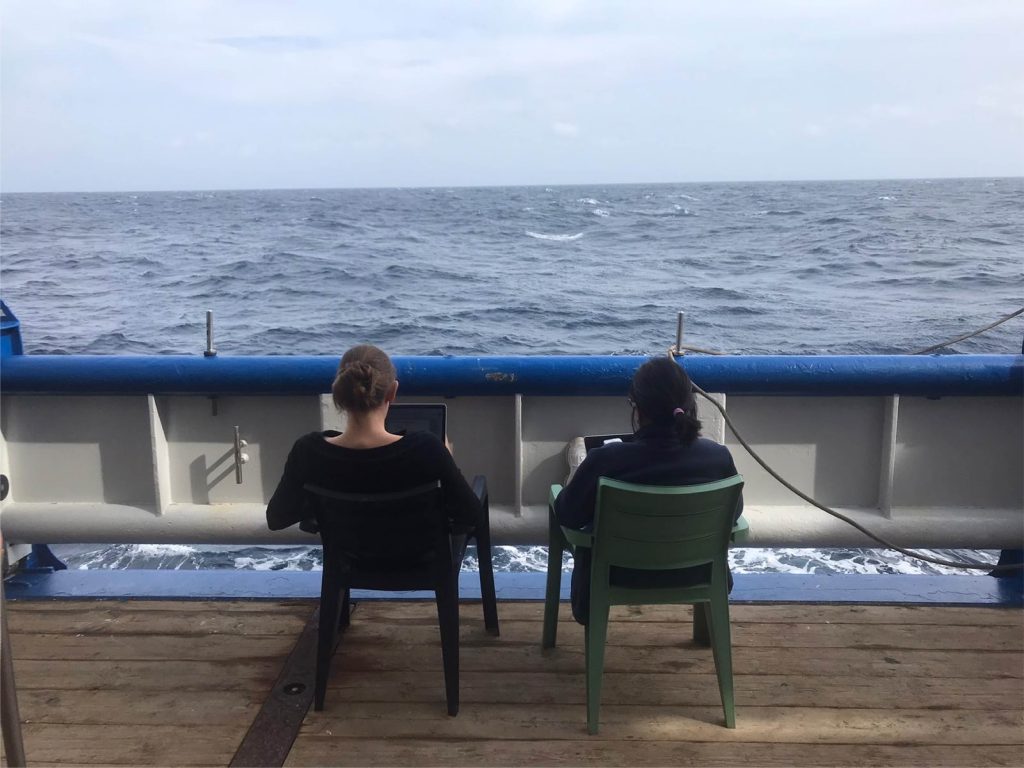
In the evening, Laura, a NESSC-researcher working at NIOZ, presented her PhD project on calcification of benthic foraminifers and her ultimate target to find a proxy for CO2 and pH. Zeynep (postdoc in organic geochemistry at NIOZ and sea-going expeditions expert) shared with us some results of the NICO Leg 7 expedition.
Day 3: the day was “easily” filled: seasickness kept us busy. Someone (like me) slept 22 hours, someone provided repeatedly fresh food for fish, all of us looking like zombies the day after. No pictures available of this day.
Day 4: as the sea calmed down, activity picked up. The day started with a coffee (or a tea) on the deck waiting for the sunrise. While Rick Hennekam (postdoc in paleoceanography at NIOZ) was trying to find a highly organic geochemistry-oriented paper interesting, Kristin, a PhD at NIOZ, decided it was time to prepare the material for sampling, label bags and vials.
In the evening’s presentation round, Rick talked about the power of XRF scanning marine sediments and Kristin explained her research project on dynamics of hypoxic and anoxic environments and the complex incubation experiments she is setting up on board.
It was then time for a mega tournament! We all played a game call ‘ass’, while sitting in the wet lab, enjoying the mild temperatures outside … Laura won easily the first 5 rounds, then a quick look into each other’s eyes, and the strategy changed. You get to let the chief scientist win, right? Surprisingly, Francien defeated us. 🙂
Day 5: Alena and Laura decided to take action and start prepping material for their sampling: endless writing codes on plastic bags, and bottles, while drinking Coca Cola to stay awake.
In the evening it was my turn to talk about primary production, eutrophication in coastal areas, Harmful Algal Blooms (HABs). I made a wish: reconstruct past HABs of Karenia brevis (the nasty dinoflagellates causing toxic blooms each year in the Gulf of Mexico). We shall see. Francien explained her goals and related challenges of tracing the terrestrial organic molecules into the marine sediments. To conclude the round of presentations, Alena, a PhD candidate at NIOZ, presented her project on the characterization of microbial communities in marine sediments with a focus on Woeseiales.
We missed Yord, the youngest NESSC PhD candidate, who started his PhD at Utrecht University, as his project is tightly related to the expedition.
The bell rings, time for lunch!
Francesca Sangiorgi


